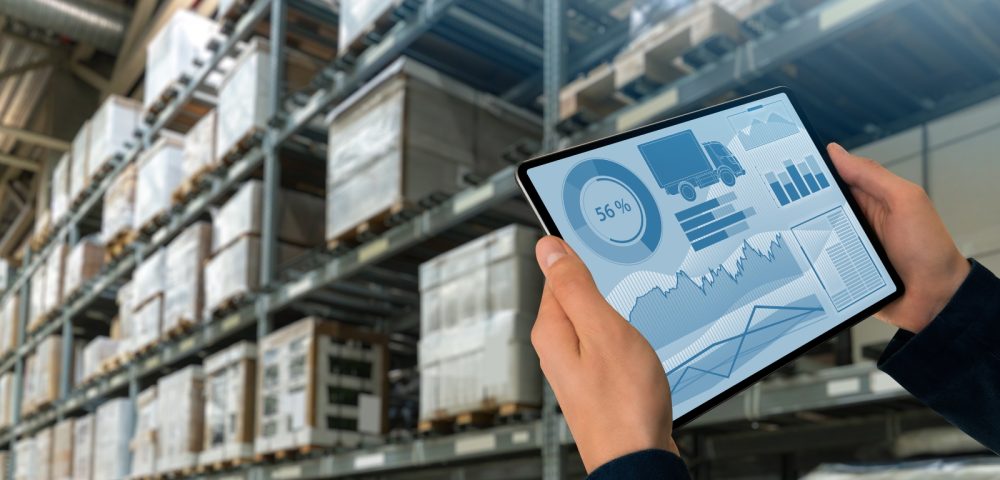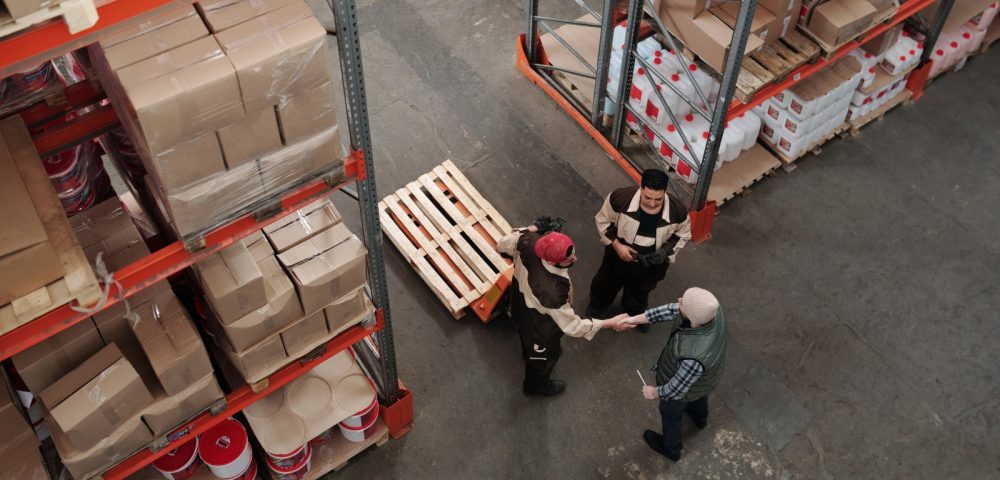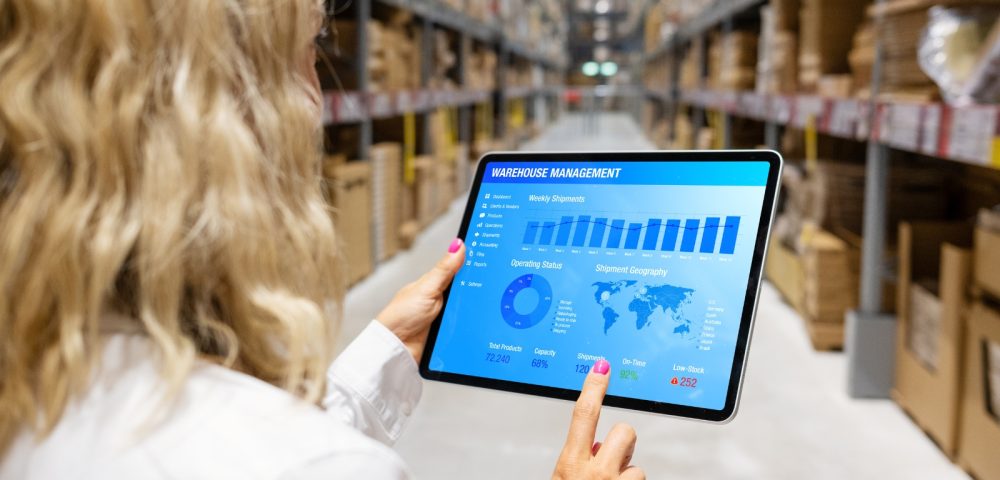Did you know that warehouses around the globe lose approximately $1.5 trillion annually due to inefficiencies in inventory management and poor operational practices? Why lose when you can save and earn profits through each stock? This is where the ‘Warehouse Management System’ (WMS) COMES IN. These systems provide real-time control, but many businesses still miss out.
In this essential guide, we give you a 360-degree view of the WMS.
We will explore
- What is the WMS System?
- Top Benefits of a Warehouse Management System
- What is the Purpose of the WMS System?
- How Does a WMS System Work?
- Types of Warehouse Management Systems
- New Trends in Warehouse Management Systems
- Cerexio WMS for Full Warehousing Operational Coverage
- Simplifying Warehousing Chores with Robust Tools
- FAQ about WMS
What is WMS System?

- The software helps businesses track, organise, and manage everything that happens inside a warehouse, from receiving goods and storing them properly to picking, packing, and shipping orders.
- It gives real-time updates on inventory levels, so teams can avoid stockouts, reduce waste, and speed up delivery. Since it connects with other systems like ERP and transportation tools, warehousing teams can work together more smoothly.
- Instead of guessing where things are or relying on paperwork, warehouse staff can use WMS to make faster and smarter decisions.
Top Benefits of a Warehouse Management System

Improves Inventory Accuracy
This helps workers keep better track of products in real time. It updates inventory automatically as goods move in and out. Therefore, you do not have to count items manually or guess what is in stock. This avoids mistakes, keeps shelves organised, and makes reordering much faster and easier.
Speeds Up Order Fulfilment
With a WMS, warehouse staff know exactly where each product sits and how to get to it fast. The system guides them through the picking and packing steps, cutting down wasted time. As a result, customers get their orders quicker, and businesses stay on schedule without scrambling to fix delays or missing shipments.
Reduces Operating Costs
It helps businesses avoid spending extra money on labour, storage, and shipping. It shows the most efficient ways to store items and move them around, so workers do not waste steps or space. This makes day-to-day tasks smoother and helps companies save money without lowering their service or speed.
Increases Visibility and Control
Warehouse managers use WMS to see everything that is occurring in their spaces, such as what is in stock, what is running low, and where items are going. This real-time insight helps them make smarter choices fast, instead of waiting for reports.
Boosts Customer Satisfaction
When a WMS runs smoothly, orders arrive on time, in the right condition, and with the correct items. That kind of service builds trust with customers and keeps them coming back. Since the system cuts down on errors and delays, it makes life easier for support teams and happier for everyone who orders.
What is the Purpose of the WMS System?

Inventory Management
The latter tracks every item from the moment it enters the warehouse until it leaves. It updates inventory levels instantly, helps teams avoid running out of stock, and cuts down on wasted items. Workers can scan barcodes, follow automated alerts, and keep storage organised without constantly guessing.
Labour Management
WMS gives managers the tools to assign tasks smarter and faster. It shows who is available, what they should do next, and how long each task should take. Instead of wasting time or creating overlap, the system balances workloads and helps staff stay productive.
Order Fulfillment
This helps warehouse teams find, pack, and ship products more accurately and quickly. It tells workers the best routes through the warehouse and the right items to grab, so they do not waste time or miss things. As orders come in, the system sorts them, sets priorities, and prints shipping labels.
Space Optimisation
WMS helps warehouse staff use storage space wisely. It studies item sizes, movement speed, and demand to place goods in the best locations. Fast-moving items go near the front, while slow ones stay out of the way. This cuts down travel time and clears up clutter, making the floor easier to move around.
Real-Time Data and Reporting
It gives managers real-time updates and detailed reports, showing what is happening inside the warehouse every second. It highlights slowdowns, errors, or empty stock before they cause bigger issues. Instead of waiting for weekly summaries, teams use live dashboards and alerts to react fast.
How Does a WMS System Work?

It works by guiding and tracking every task inside a warehouse, from receiving goods and putting them on shelves to picking, packing, and shipping orders. It uses barcodes, RFID tags, scanners, and real-time data to show where items are and what is happening.
Staff follow digital instructions on mobile devices, while the system keeps updating the inventory, space usage, and labour tasks.
Businesses can run WMS as a stand-alone system, but most teams prefer to connect it with tools like ERP, MES, or transport software.
Types of Warehouse Management Systems

Standalone WMS
Manufacturers who want focused warehouse control mostly choose a standalone WMS. This system handles inventory, picking, packing, and shipping without mixing with other business tools. It suits smaller operations or those with limited budgets. While it runs on its own, it still supports barcode scanning and data tracking.
Cloud-Based WMS
Manufacturers who want flexibility and easier updates go with cloud-based WMS. This system runs on the internet, so teams access it from anywhere using devices like tablets or computers. Vendors handle maintenance, and companies do not need to install heavy systems or hire tech experts. Updates happen automatically, and the system adjusts easily to changing order volumes.
ERP-Integrated WMS
Manufacturers often pick ERP-integrated WMS to connect warehouse tasks with finance, HR, and production systems. It helps all departments see the same real-time data, which keeps decision-making fast and accurate.
Supply Chain Modules in WMS
Some WMS types include supply chain features that stretch beyond the warehouse. These systems track raw materials, finished goods, suppliers, and even transportation. Manufacturers who need full control from sourcing to delivery choose this setup. It gives better visibility across every step and helps teams fix supply chain issues before they grow.
Tiered WMS (Tier 1, 2, 3)
Manufacturers choose tiered WMS based on their size and needs. Tier 1 WMS fits large companies with global warehouses and complex demands. Tier 2 works well for mid-sized businesses, offering strong features without extra cost. Tier 3 supports smaller companies with basic tools to manage inventory and shipments. Each level gives a different mix of power, control, and cost.
New Trends in Warehouse Management Systems

Artificial Intelligence (AI)
AI now helps warehouse systems make smarter decisions in less time. It studies data, spots patterns, and suggests faster routes or better stock placements. Managers use AI to predict demand, reduce waste, and avoid delays.
Internet of Things (IoT)
IoT connects sensors, machines, and devices across the warehouse. It tracks temperature, movement, and stock levels in real time. Workers no longer need to check things manually because IoT keeps them informed instantly. With connected tools and alerts, warehouses run more smoothly, react faster to changes, and avoid costly surprises.
Robotics and Automation
Robots now handle tasks like picking, packing, and moving goods. This cuts down on human errors and speeds up operations. Workers do not waste time on heavy lifting or walking long distances. As automation grows, workers focus more on planning while machines take care of repetitive or risky warehouse jobs.
Data Analytics and Dashboards
Modern WMS tools now include dashboards that show data in clear charts and graphs. Managers can track stock, spot delays, and plan ahead without digging through files. These real-time visuals help teams fix problems faster and understand what is really happening.
Cerexio WMS for Full Warehousing Operational Coverage

With Industry 4.0 powers, the Cerexio WMS system can control the full warehouse flow, from incoming goods to final shipping. Smart sensors, automated tools, and live data work together to make our system strong. With Cerexio WMS, your managers can stay informed, workers move efficiently, and nothing falls through the cracks.
Simplifying Warehousing Chores with Robust Tools

Are you tired of warehouse chaos draining your time? If you opt for the robust tools, they will transform your whole warehouse! You do not need a bigger space or more workers anymore. You only need smarter tech.
FAQ about WMS
No, WMS and ERP are different. A WMS focuses specifically on managing warehouse operations like inventory, picking, and shipping. ERP covers broader business processes such as finance, HR, and production, often integrating with WMS for seamless data flow.
The latest trend in WMS includes AI-powered automation, real-time IoT tracking, cloud-based systems, and advanced data analytics. These innovations improve accuracy, speed, and flexibility, helping warehouses adapt quickly to changing demands and complex supply chains.
A KPI in WMS measures warehouse performance, like order accuracy, picking speed, or inventory turnover. These key performance indicators help managers track efficiency, spot issues, and improve processes to boost productivity and meet customer expectations consistently.
